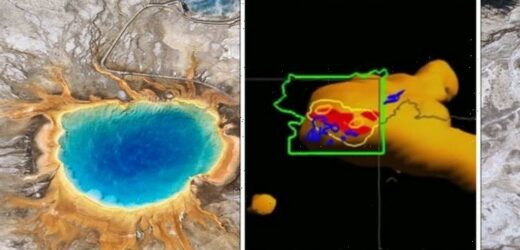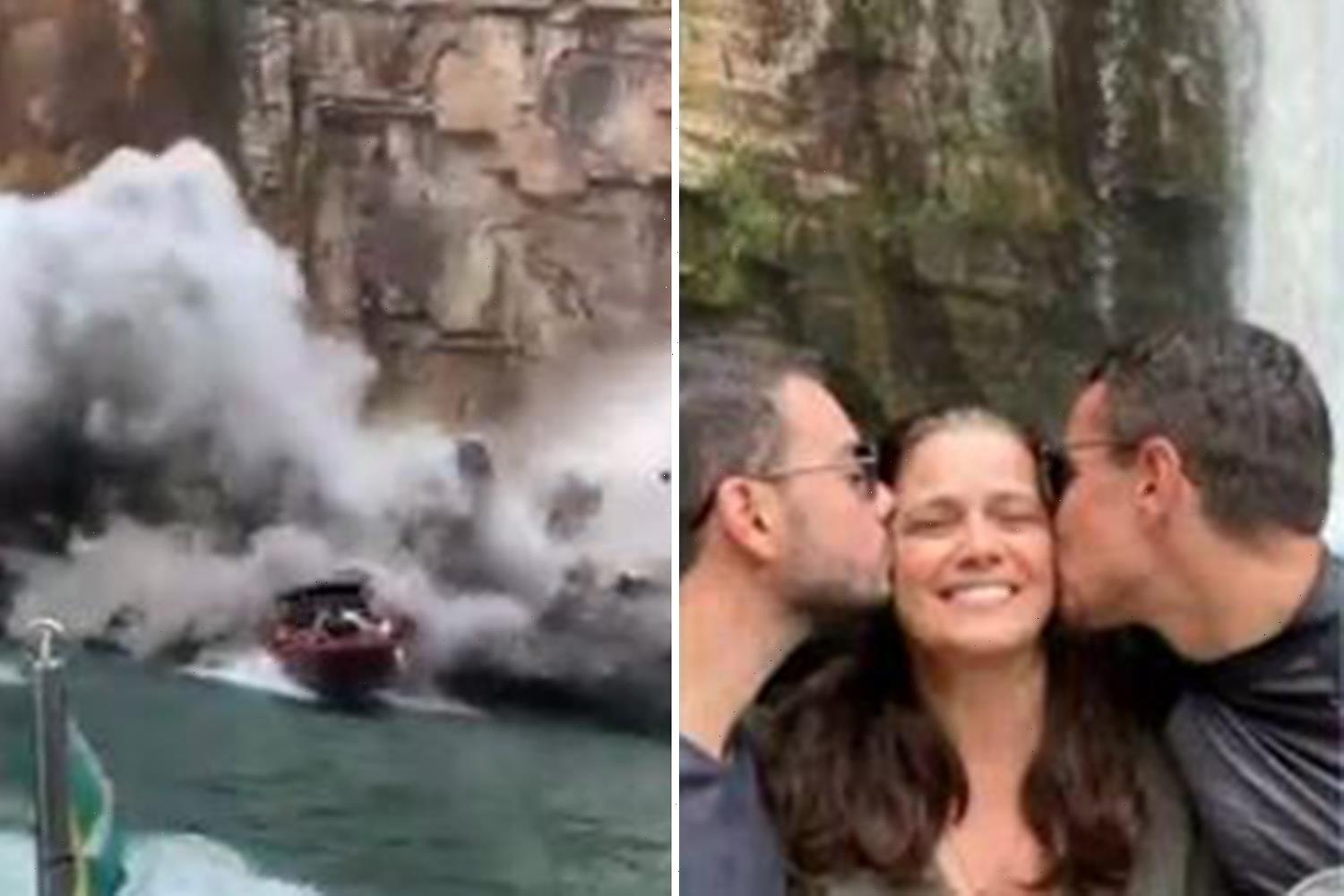Yellowstone volcano’s magma chamber mapped in documentary
We use your sign-up to provide content in ways you’ve consented to and to improve our understanding of you. This may include adverts from us and 3rd parties based on our understanding. You can unsubscribe at any time. More info
Yellowstone, located in Wyoming, US, is one of the world’s few ‘supervolcanoes’ — a volcano that has had an eruption with a Volcanic Explosivity Index of eight. In the last three million years it has experienced three eruptions, the last coming around 630,000 years ago, which was 1,000 times bigger than the 1980 Mount St. Helens eruption. Its calderas — the large cauldron-like hollow that forms after a magma chamber is emptied during an eruption — lie over the Yellowstone hotspot under the Yellowstone Plateau.
Here, light and hot magma from the mantle rises toward the surface, with the hotspot deep beneath the surface, so deep that the North American Plate slides west-southwest over it.
Over the past 16.5 million years this hotspot has generated a succession of explosive eruptions but less violent floods of basaltic lava.
Today, scientists and researchers closely observe Yellowstone for any signs that it might be gearing up to explode in the near future.
It is generally accepted that an eruption in the next 10,000 years is very unlikely, with scientists having found no imminent smaller eruption of lava in more than 30 years of monitoring.


But this has not stopped fieldworkers studying the caldera, creating cutting-edge graphics and models with data harnessed from the volcano, as explored during the Smithsonian Channel’s documentary, ‘Yellowstone Supervolcano’.
In 2015, scientists collected new data which gave them the best idea yet of Yellowstone’s underground plumbing.
Identifying the volcano’s magma chamber from the last eruption, they discovered how it was being fed by a plume of magma stretching down 465 miles northwest into Montana, mostly solid rock but with the potential to liquify.
Using the data, researchers created a graphic showing a giant yellow stalk shooting off into the ground far away from Yellowstone’s surface.
JUST IN: Archaeologists stunned by ancient Myanmar monument

It is through the plume that magma, or molten rock, is rising up into the magma chamber at a rate of two inches a year.
There is no reason for this process to stop, and eventually it will continue until the pressure becomes too much and a volcanic eruption occurs — or, it could come in short, sharp spurts.
While this is unsurprising, what scientists are paying close attention to is the liquidation process.
The real danger comes when the plume starts liquefying and moving up at a faster rate.
DON’T MISS
Mountain range disappeared into Yellowstone supervolcano magma chamber [REPORT]
Yellowstone eruption warning: Human brains could be ‘popped apart’ [INSIGHT]
Brexit Britain win as experts ‘astounded’ by battery results [ANALYSIS]


On erupting, Yellowstone’s magma is unlikely to turn into lava because the intensity of an eruption would force most of it to shoot into the sky.
It would then take on the form of airborne ash particles, small, extremely hot pieces of jagged rock.
This event alone would affect nearly all of the US and Canada, with tens of millions of people within a 1,00km (621-mile) radius at risk of death.
Once the ash was breathed in, it would form a cement-like mixture in people’s lungs and cause suffocation.
And, while those outside the 1,000k range may be safe from the immediate aftermath of an eruption, a centimetre of ash would still have fallen, still a dangerous level for human lungs.
Even Europe would get hit with some of the ash, while the rest of the world would experience climatic changes: global temperatures would drop by around 10°C and stay that way for at least a decade.

Things like crops and water supplies would also be severely affected.
Some scientists and organisations have spent years hatching plans to stop any future Yellowstone eruption from ever occurring.
NASA has spent significant time working on solutions, like increasing the amount of water inside the volcano with a view to extract heat from it and so reduce the risk of a build up of pressure.
But many have said that in reality this would prove far too difficult, with politicians unlikely to sanction such an initiative.

Other plans have looked at harnessing the power of Yellowstone and somehow converting this into a sustainable energy source.
One reported NASA plan involves drilling a 10km hole into Yellowstone and pumping water into it at a high pressure.
This would circulate the water and return it at an estimated temperature of 350C (662F), and slowly day by day extracting heat from the volcano.
Estimates suggest such a project would come at a cost of around $3.46billion (£2.69billion), but would generate electric power at competitive prices, and so comes with an enticing catch which could convince politicians to make the investment.
Source: Read Full Article


